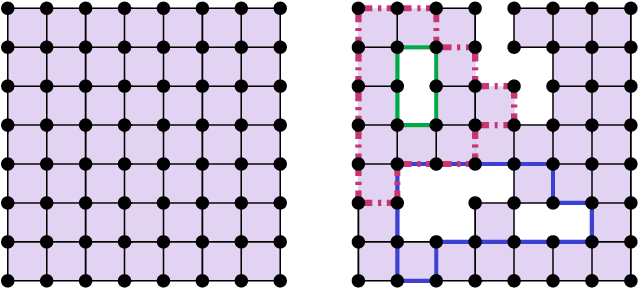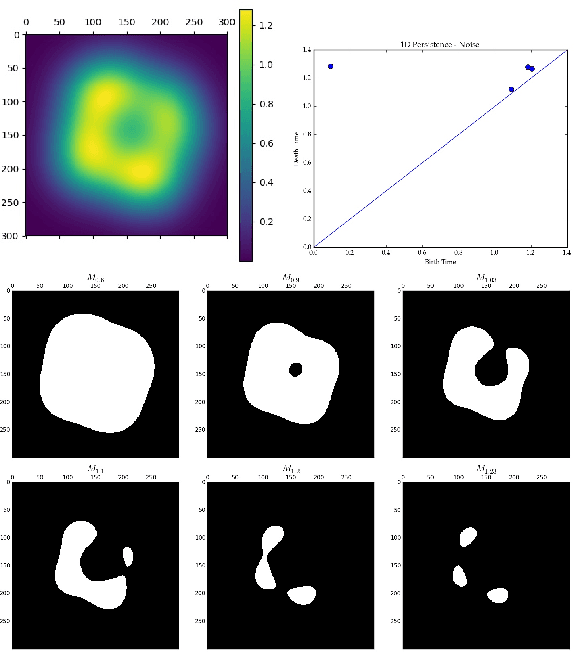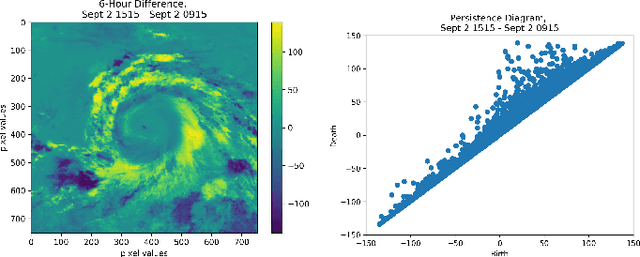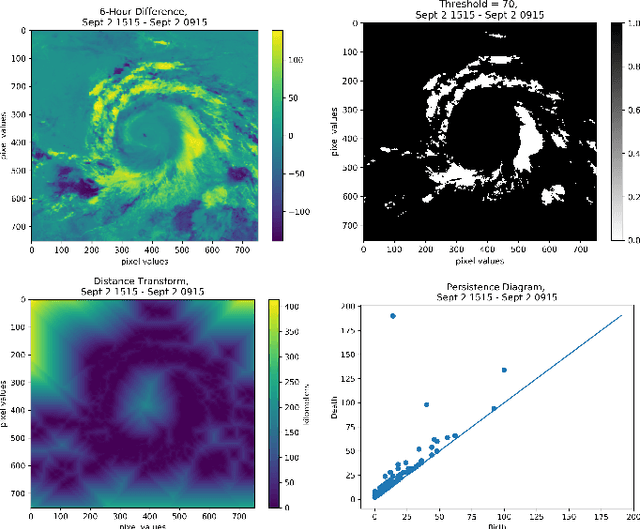Using Persistent Homology to Quantify a Diurnal Cycle in Hurricane Felix
Paper and Code
Feb 17, 2019



The diurnal cycle of tropical cyclones (TCs) is a daily cycle in clouds that appears in satellite images and may have implications for TC structure and intensity. The diurnal pattern can be seen in infrared (IR) satellite imagery as cyclical pulses in the cloud field that propagate radially outward from the center of nearly all Atlantic-basin TCs. These diurnal pulses, a distinguishing characteristic of the TC diurnal cycle, begin forming in the storm's inner core near sunset each day and appear as a region of cooling cloud-top temperatures. The area of cooling takes on a ring-like appearance as cloud-top warming occurs on its inside edge and the cooling moves away from the storm overnight, reaching several hundred kilometers from the circulation center by the following afternoon. The state-of-the-art TC diurnal cycle measurement has a limited ability to analyze the behavior beyond qualitative observations. We present a method for quantifying the TC diurnal cycle using one-dimensional persistent homology, a tool from Topological Data Analysis, by tracking maximum persistence and quantifying the cycle using the discrete Fourier transform. Using Geostationary Operational Environmental Satellite IR imagery data from Hurricane Felix (2007), our method is able to detect an approximate daily cycle.
 Add to Chrome
Add to Chrome Add to Firefox
Add to Firefox Add to Edge
Add to Edge